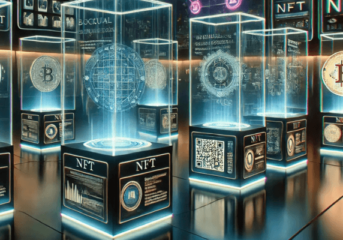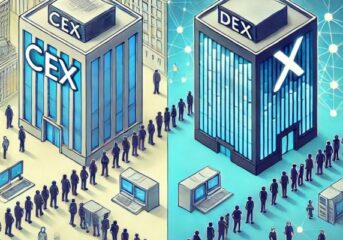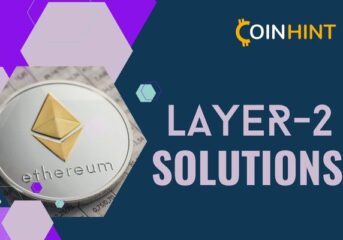What Is Web3 Technology? Understanding the Future of the Internet
Over time, the process of transferring data via the internet has improved and the ways this information can be used have expanded. The decentralized web, also known as Web3 is the latest iteration of the internet and features significant changes to the technologies that power it and their core principles. In this article, we explain Web3 technology, how it works, and its key features.

What Is Web3 Technology?
Web3 Technology is a set of protocols, algorithms, and principles that work together to create a decentralized web platform. Web3 technologies adopt the principles of zero-trust, inclusivity, and rigid security to create internet facilities that can be used by anyone without interference from a central authority. As the name implies, it is the third generation of the web and focuses on the sovereignty of the user. Web3 technologies are crafted to deliver the core values of the decentralized web.
How Does Web3 Work?
The user interfaces on popular Web3 platforms are like any other website, however, they differ in the way they operate. Web3 leverages a decentralized backend and protocols that create a communication path between the backend and the front end. Web3 is a dynamic system built on servers and data management technologies that have multiple points of control.
At the core of web3 is blockchain technology, the blockchain handles the management of data generated on the web3 platform as well as the majority of routine operations. The user interfaces are designed like normal web2 websites, however, complex blockchain commands are packaged as simple button clicks. Web3 platforms often interact with a blockchain wallet for different purposes such as managing user profiles and users’ assets.
Core Components of Web3 Technology
Blockchain Technology
The blockchain is a distributed ledger system. It allows a network of connected devices to verify information generated on the network. It makes extensive use of encryption technologies to create a private, yet secure network that enables users to progressively generate data and interact with these data for various purposes. The blockchain is immutable; data stored on the distributed ledger are resistant to modification by an attacker. The blockchain is also flexible; it can fit into several use case systems.
Smart Contracts
Smart contracts are bits of computer codes that can be understood by the blockchain. Smart contract blockchains feature Virtual Machines (VMs) that translate the smart contract codes into code bytes and subsequently into commands that are automatically executed on the network. Smart contracts enable developers to automate basic blockchain operations like asset transfers and advanced operations like staking an asset. Smart Contracts enable web3 platforms to achieve the level of user interaction seen in web2 platforms.
Decentralized Applications (DApps)
Decentralized applications are software applications built on the blockchain. DApps are designed to interact with the blockchain using smart contracts. They utilize the blockchain as servers and CAN perform CRUD (Create, Read, Update, and Delete) operations through their connection to the blockchain. DApps can be designed for diverse use cases. Their relevance cuts across sectors like Finance, Health, Energy, and other routine utilities.
Key Features of Web3 Technology
Decentralization
Decentralization means the absence of a central authority or an equal distribution of authority to every entity participating in a system. Web3 technology is decentralized in terms of technology and governance. In addition to being built on the blockchain web3 technology also enables community governance through DAOs. Decentralized systems have multiple points of control and failure, in contrast to centralized platforms.
Tokenization
Web3 technologies often utilize cryptographic tokens. Leveraging smart contract technology, Web3 technology can be used to create representations of real-life assets (and representations of other financial assets) in the form of tokens on a blockchain network. These tokens can be integrated into DApps and used alongside other features of the application as a complete system for finance and many other use cases.
Interoperability
Interoperability describes the ability of Web3 systems to interact with other external systems easily. Web3 technology creates a communication path with other web3 systems, web2 systems, and unrelated systems.
The Evolution of the Web: Web1, Web2, and Web3
Tim Berners-Lee introduced the World Wide Web (WWW) in 1989 as a technology that enables information to be shared over the internet. It allows users to find information using Uniform Resource Locators (URLs). URLs define unique locations of files on the internet. The prototype of the Web is Web1. Web1 is a plain information system built on the internet. It simply allows users to search for documents as website pages. Web1 websites are plain platforms hosting documents on the internet, users can only search and read these resources but are unable to interact with the platform in any other way.
Ten years after the introduction of the web, Darcy DiNucci coined the term ‘Web2’ to describe web platforms that allow advanced interactions and active user participation. Web2 platforms not only host information on internet servers but allow users to create accounts on the platform, create information, and interact with information created by other users on the platform. The servers on web2 platforms are managed by a central administrator who reviews and regulates the information users post on these platforms. Web2 platforms maintain the web’s normal architecture but open more opportunities for user involvement.
In the wake of blockchain and smart contract technology, and in response to unethical censorship on web2 platforms, the idea of web platforms where users maintain complete sovereignty grew more popular. Ethereum Co-founder, Gavin Wood coined the term ‘Web3’ to define the third generation of the internet and one that prioritizes true ownership of information created by users on the web. Web3 platforms are built on blockchain networks and utilize smart contract technology. Web3 grew more popular alongside blockchain technology, it maintains the architecture of web2 platforms but improves the web for data privacy, censorship resistance, throughput, and inclusivity.
Benefits and Challenges of Web3 Technology
Advantages of Web3 Technology
Inclusivity and Censorship Resistance
Web3 platforms are open to everyone. They are permissionless and allow everyone to control how their data, and the resources they create on the internet, are managed. The requirement for creating user accounts on a Web3 platform can be a one-time wallet connection. In contrast, Web2 platforms often require more personal information. Web3 is built on an immutable backend, information on these platforms cannot be removed by a central administrator.
Lower Barrier to Participation
Due to the simplicity of Web3 platforms and the absence of restrictions seen on Web2 platforms, Web3 platforms open the internet further. Anyone can access decentralized applications and interact fully.
Improved Security and Privacy
Web3 technology enables users to access resources on the internet without giving up their data. It is pro-privacy. Despite being built on a system as transparent as the blockchain, it caters to users’ privacy. Web3 platforms are considered more secure than Web2 platforms due to the absence of a single point of failure.
Challenges and Limitations of Web3 Technology
Technological Complications
The blockchain is still a new technology, as a result, most people are yet to fully understand how it works and how to interact with it. Many users may find decentralized applications hard to use. The technological complication of Web3 systems is a major barrier to mass adoption.
Regulatory Challenges
Regulatory challenges of Web3 technology are in two phases:
First, due to the absence of a central administrator to coordinate how users use Web3 platforms, it can be hard to regulate such a system to prevent abuse. Web3 platforms may fall to uncontrollable unethical usage.
Due to the overall privacy system and operation of Web3 systems, they often attract legal attention as the central governments struggle to gain control of such platforms. Several Web3 projects have been the subject of famous legal battles. Many DApps are banned in several countries. This also limits the adoption and growth of Web3 technology.
Popular Use Cases of Web3 Technology
Decentralized Finance and Real-World Asset (RWA) Tokenization
Decentralized Finance (DeFi) is a term for applications built on the blockchain and other Web3 technologies (like smart contracts) that enable users to perform financial activities. Unlike centralized financial platforms, DeFi platforms allow users to maintain total custody of their assets while they perform activities like P2P lending, borrowing, exchange of assets, and other financial operations. Web3 technology can also be used to tokenize real-world assets as a way of improving the flexibility of assets like real estate, bonds, shares, and fiat currencies. DeFi and RWA tokenization are gaining traction in the mainstream finance sector.
Decentralized Social Media
Like other social media platforms, DeSo platforms allow users to create content on the internet. Decentralized social media platforms allow users to manage their interactions better. Content created on these platforms cannot be removed by a central admin and users also control how the resources they create are used. Some DeSo platform also allows users to customize the remuneration structure. Some popular DeSo platforms include Mastodon, BlueSky, Steemit, and Hive.
Decentralized Gaming
Decentralized Games use blockchain technology, NFT technology, and smart contract technology to develop games where users truly get to truly own their in-game items. Decentralized games are structured like any game, but items used in the game, including the characters and costumes, are NFTs which are often transferrable and tradable.
The Potential Impact of Web3 on the Future of the Internet
Interest in Web3 technology is growing at an impressive pace, this also corresponds to the growth seen in the technology itself. As Web3 technologies get more potent and more users flock to these platforms, we could see a significant improvement in the web as a whole. Web3 platforms appeal to users due to their ease of use. Even for mainstream institutions, the flexibility and expanded opportunities created by Web3 are a great appeal. Web3 could usher in a user-centered phase in the evolution of the web, one where the power of decision-making and general control is vested in the users.
Innovations to Watch in the Web3 Space
Some innovations to watch in the web3 space include:
- A growing connection between RWA tokenization and DeFi – Platforms that tokenize real-world assets and create an avenue for pursuing use cases such as yield-farming and collateralization of these assets could soon become more prevalent.
- Decentralized social platforms that allow users to tokenize every form of participation are also a growing concept. Despite the failure of early prototypes like friend.tech, such systems could be improved for feasibility in the future.
- Highly customizable decentralized games are also one to watch for the future.
The Role of Web3 in Shaping a Decentralized Digital Economy
The traditional economy is under the control of centralized governance, as a result, accessing relevant financial instruments is tedious. With Web3 technology, this is easily improved. Web3 technologies enable easy access and management of financial instruments. Tokenization technologies can create digital representations of just about anything and enable additional use cases. As seen in digital arts, Decentralized lending, tokenized real estate, and government treasuries; Web3 technologies can be used to create a more efficient, secure, and private digital economy.
Conclusion
The decentralized web is part of a global drive to revolutionize the internet. It aims to create equal control over internet-based platforms and preserve information for all. Our CoinHint analysts anticipate that while the current prototypes of Web3 technologies will change significantly over time, the basic goal of a censorship-resistant and information-preserving system will be sustained as Web3 evolves.
While there could be significant differences between certain Web3 systems, each technology is a move away from the norms of the centralized web. Regardless, the main difference between the centralized and decentralized web is the back-end structure that powers it and how it handles information generated on these platforms and their procedures. It is also important to note that Web3 is a relatively young concept and vulnerable to dysfunctions, it is recommended that users apply caution while interacting with advanced computing protocols.
FAQ
-
What is Web3 in simple terms?
Web3 is the decentralized web. It is an evolutionary phase of the internet that strives to distribute control evenly to every user. Web3 platforms are censorship-resistant and do not have a central administrative unit. Put simply, they are permissionless.
-
How is Web3 different from Web2?
Web3 features a distributed control system. Unlike Web2 platforms, they use a decentralized data management system as their primary back-end unit. This backend is the blockchain. Web3 systems are permissionless, meaning that anyone can use the platforms. They have no central admin and are immune to censorship.
-
Why is Web3 important?
Web3 ensures that everyone has equal control of the internet platforms they use. Data generated on the platform are immutable, meaning that no one can delete them. On Web3 finance systems, everyone can enjoy available services and maintain self-custody. Web3 is a pro-societal approach to the internet and fits the global idea of freedom and inclusivity. It is also relatively more secure.
-
What is the main goal of Web3?
The main goal of web3 is to provide a secure, censorship-resistant, and permissionless internet platform that functions without selective restrictions and central control.
-
How can I get involved in Web3?
Web3 is open to general participation like Web2 platforms. As a more inclusive system, there are no barriers to entry. A basic knowledge of how the blockchain, smart contracts, and decentralized applications work is required to get involved in Web3. You can access Dapps, using supported wallet applications.
-
What are some real-world applications of Web3?
Some real-world applications of web3 include:
- Decentralized social media platforms like Steemit, Hive, Mastodon, and Only1.
- Decentralized finance (DeFi) and real-world asset tokenization (RWA) platforms like Aave, Ondo Finance, and Uniswap enable users to access financial services without a central admin or third party.
- Real-world utility decentralized applications like Chainlink and Helium attempt to solve real-world issues using decentralized technologies.
- Decentralized storage systems like Arweave and Filecoin allow anyone to access decentralized cloud storage services.








